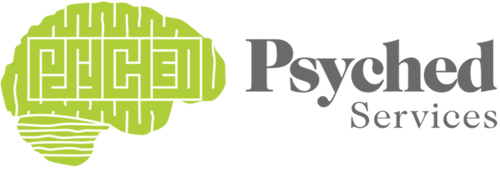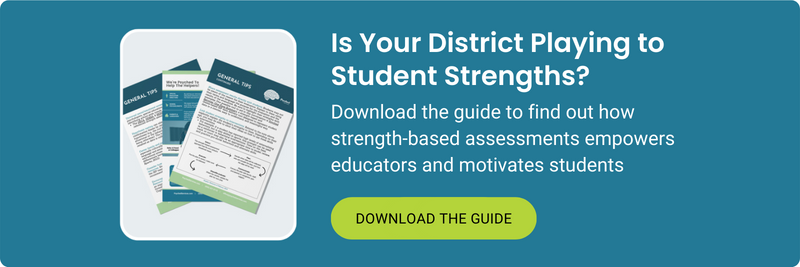What is a Pattern of Strengths and Weaknesses?

By Maria Gregory and Marysa Enis
What is a Pattern of Strengths and Weaknesses?
A pattern of strengths and weaknesses (PSW) is one approach for determining specific learning disabilities (SLD). As opposed to the old-school discrepancy model, which tells clinicians if a student is performing more poorly than expected, PSW seeks to determine why a student is performing more poorly.
Under the discrepancy model, school psychologists give an IQ test, then compare a student’s score to how well they did on tests of reading, writing, and math. The theory is that a student’s IQ *should* match scores in academics, and if it doesn’t, the student must have a learning disability. The problem is that LOTS of things can cause a student to do poorly in school, and only a small part of that is IQ. (If you haven’t already, listen to Radio Lab’s series on intelligence, the explanations are perfect).
Under PSW models, school psychologists look beyond a student’s overall IQ score and more specifically at the various cognitive processes that contribute to IQ. As with all forms of assessment, this is not without controversy (for an overview, read our previous article on assessment of SLD), but it has gone a long way to help people understand the biological bases of learning disabilities.
These Are Some Common Methods:
-
Cross-Battery Assessment (“XBA”)
-
Milton Dehn’s Processing Model
-
Discrepancy/Consistency Method (DCM)
-
Concordance-Discordance
-
Core-Selective Evaluation Process (C-SEP)
What Do PSW Models Have in Common?
Regardless of which model a clinician uses, the key is to establish (drum roll, please…) a pattern. After testing multiple aspects of a student’s IQ, school psychologists look to answer the following questions:
-
Does a student have cognitive weakness, or are all their scores within the average to above-average range? In contrast to some discrepancy models, students are not identified with an SLD if all of their abilities are average.
-
If a student has weaknesses, is there a clear and consistent pattern to show what they are? In other words, can the clinician easily tell what types of tasks are easier or harder for the student? If the scores are inconsistent, there may be a different issue contributing to the student’s difficulty.
-
If there is a clear pattern, does the student also have academic weaknesses? In other words, did they also score below average for their grade in one or more of the following: Oral expression, listening comprehension, math calculation, math reasoning, reading fluency, basic reading skills, reading comprehension or written expression?
-
If a student does have academic weaknesses, do those weaknesses make sense given their abilities on IQ tests? For example, a weakness in fine-motor coordination should not impact a child’s ability to learn math, but it may affect their ability to write.
What Should Districts Consider When Transitioning to PSW?
Shifting from the discrepancy model to PSW can be tricky for a number of reasons. Districts should expect, and plan for, the following issues:
-
Students who met eligibility for an SLD under the discrepancy model may not meet it under PSW, and vice versa. This is most likely to affect students with entirely average IQ scores (as PSW requires at least one weakness in cognition) and students with below-average IQ scores (as previous assessment may not have found a discrepancy between IQ and achievement).
-
As with any big change, clinicians will need time, training, support, and mentorship to learn the ropes. Even so, their knowledge of child development, experience working with kids, and finely attuned clinical judgement is the most important factor in assessment. While it may be tempting to look for one “fool-proof” method for assessment of SLD, the truth is that there is no one-size-fits-all approach.
Is your district moving toward a pattern of strengths and weaknesses approach to assessment? Our seasoned school psychologists would love to help! In addition to comprehensive evaluations, we provide on-site trainings, mentorship, and video-consultations. Contact us today!





